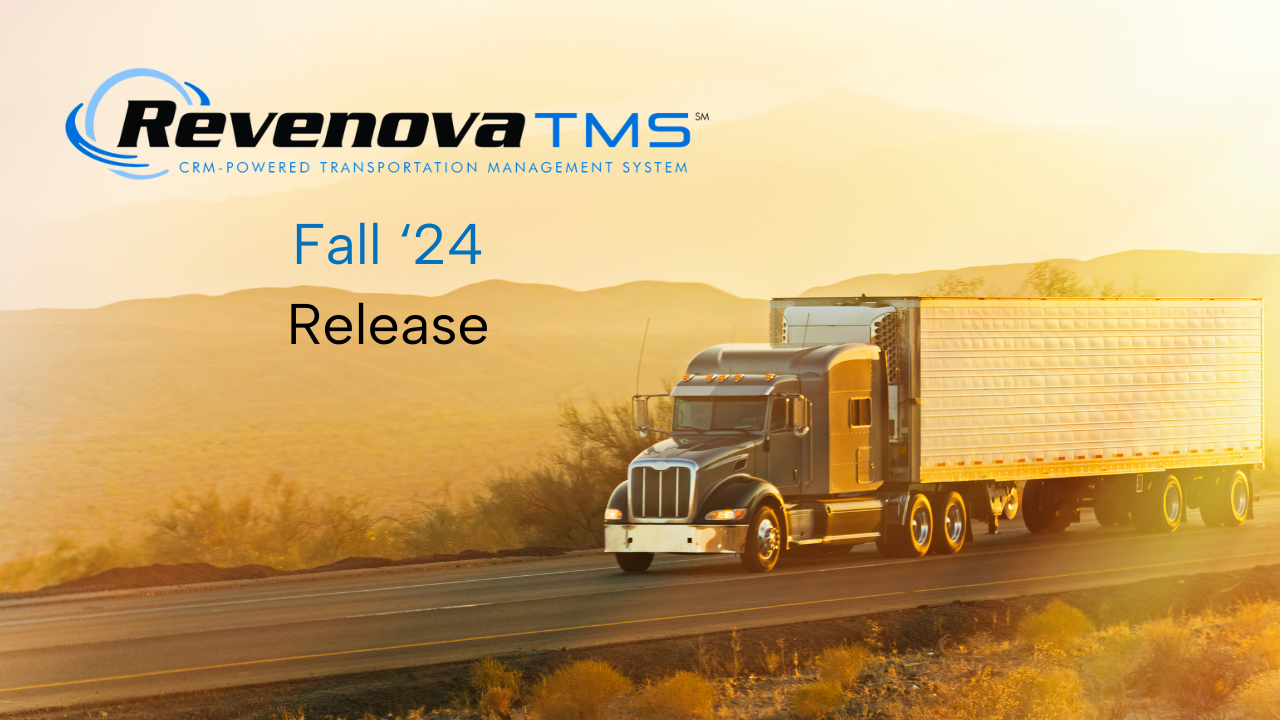
TMS and Accounting Software: A Match Made in Heaven
Budget season for 2025 has arrived and a lot of companies are probably cursing transportation management systems (TMS) that don’t integrate and work seamlessly with their back-office accounting systems. When these two critical systems aren’t sharing data with one another and instead work in silos, it takes a lot of spreadsheets, emails and manual work to “patch up” those holes and get a 360-degree financial picture of transportation plans for the year ahead.
Some of the main reasons why these two systems should be integrated and in sync include:
More accurate records. When data is automatically transferred between your TMS and your accounting system, the risk of human error is reduced. This leads to more accurate financial reporting and less need to go back in and fix errors.
Less manual work. Your accounting team’s workday can be put to much better use than using spreadsheets to shuffle data back and forth between your TMS and accounting system.
Better efficiency. Streamlining workflows and processes save time and resources, allowing accounting teams to focus on more strategic, value-added projects.
Improved financial visibility. Transportation isn’t cheap, but real-time data synchronization provides a clear, comprehensive view of the related costs. This, in turn, enables better decision-making and expense control.
Quicker payment cycles. Companies are watching their bottom lines pretty carefully right now. Automated invoice processing and payment approvals help organizations get paid faster and keep their bottom lines healthy.
No more data silos. Having TMS and accounting systems in sync supports seamless communication, workflows and collaboration across departments.
Reliable financial forecasts. Having accurate and timely transportation data tied directly to your accounting platform supports more reliable financial forecasting and budgeting (and it also takes the “guesswork” out of the forecasting process).
These are just some of the top “wins” that companies can count on when they integrate their accounting and transportation management systems.
Addressing Silo-Centric Challenges
Not all TMS providers are the same, and not all of them integrate seamlessly with the top accounting packages that companies are using. The latter isn’t a concern for Revenova TMS users, who know their solution integrates with all of the major accounting software packages. Revenova was architected entirely on the Salesforce customer relationship management (CRM) platform, so it also offers TMS users the opportunity to add the AccountingSeed platform to their tech stacks.
 “We share the same core objects, accounts and contacts on the Salesforce platform. All 4,000 of Salesforce’s partner platforms share a similar architecture, which eliminates any issues sharing real-time data or information between the TMS and the AccountingSeed package,” Charles Craigmile, CEO at Revenova, explains. “In fact, it’s the same user interface so it all feels like one application, when in fact it’s the combined Revenova TMS-AccountingSeed solution.”
“We share the same core objects, accounts and contacts on the Salesforce platform. All 4,000 of Salesforce’s partner platforms share a similar architecture, which eliminates any issues sharing real-time data or information between the TMS and the AccountingSeed package,” Charles Craigmile, CEO at Revenova, explains. “In fact, it’s the same user interface so it all feels like one application, when in fact it’s the combined Revenova TMS-AccountingSeed solution.”
Revenova TMS also integrates with various other third-party accounting systems, most of which are connected to its platform using advanced application programming interfaces (APIs). Most of the data is shared between systems in real-time, save for a few older accounting applications that may only work on a batch processing basis.
“That is still a very viable system for companies that want their TMS and accounting solutions to be intertwined,” says Craigmile. “It’s just not as tight of an integration as what you would get from real-time data sharing on the same platform.”
The Freight-Accounting Connection
Syncing your TMS and accounting systems helps freight providers grow their revenues by keeping real-time tabs on their customers’ credit limits. Here’s how it works:
- Throughout the day, companies typically receive cash in from their customers and then apply that to open AR invoices.
- When TMS and accounting systems are operating as siloed systems, they may “batch” their data every 15 or 30 minutes.
- That means there will be windows of time when customer credit limits might appear larger to the system than they really are if that cash was applied.
- Freight providers don’t want to take new orders from a customer that’s over its credit limit, but they also don’t want to miss out on the sale.
“If you don’t have the real-time cash application, you may be missing out on freight that you could take because your TMS doesn’t know that a payment was received,” Craigmile explains. “Your accounting software may know that the payment came in, but if it takes an hour to update your accounting software, then you may decline the load and miss out on that additional revenue.”
Ideally, the updates between a TMS and accounting software should occur within seconds versus minutes or hours. “It’s all about the real-time nature of information-versus-batch processing; that’s the difference with an on-platform option like Accounting Seed versus another third-party accounting application,” says Craigmile. “The good news is that even with the third-party accounting systems, we can architect them now to really resemble real-time processing. It just takes a bit more effort.”
To learn more about Revenova TMS, Request a Demo. Follow Revenova on LinkedIn, YouTube, and X for the latest updates and news about Revenova TMS, the original CRM-powered Transportation Management System.




